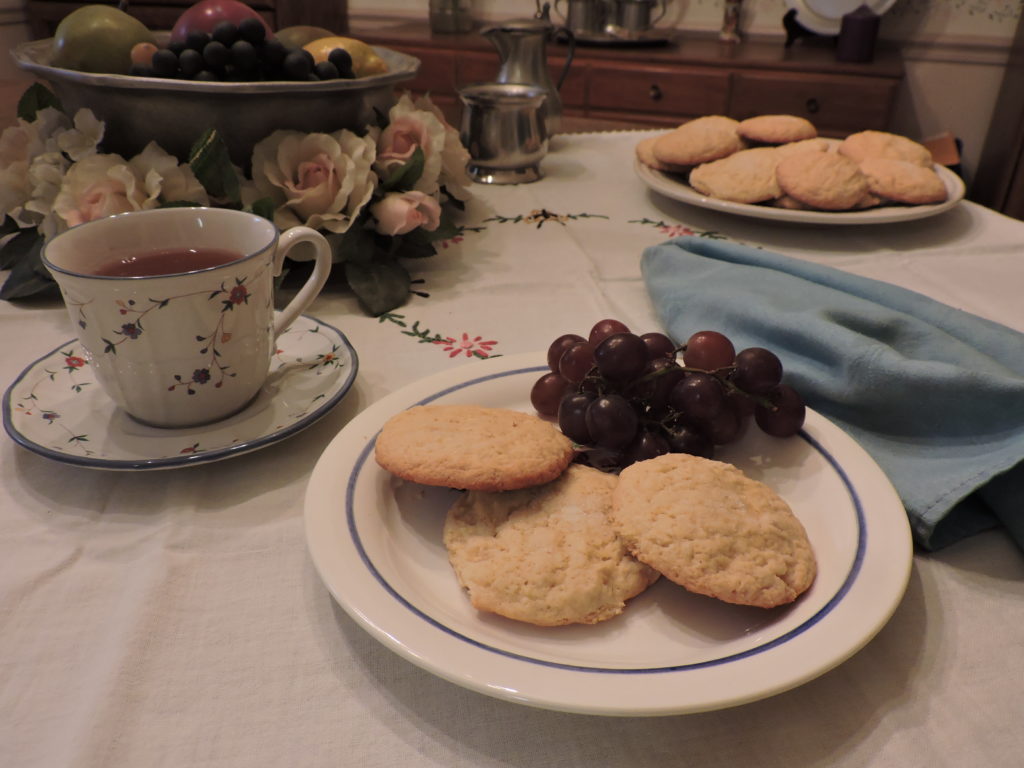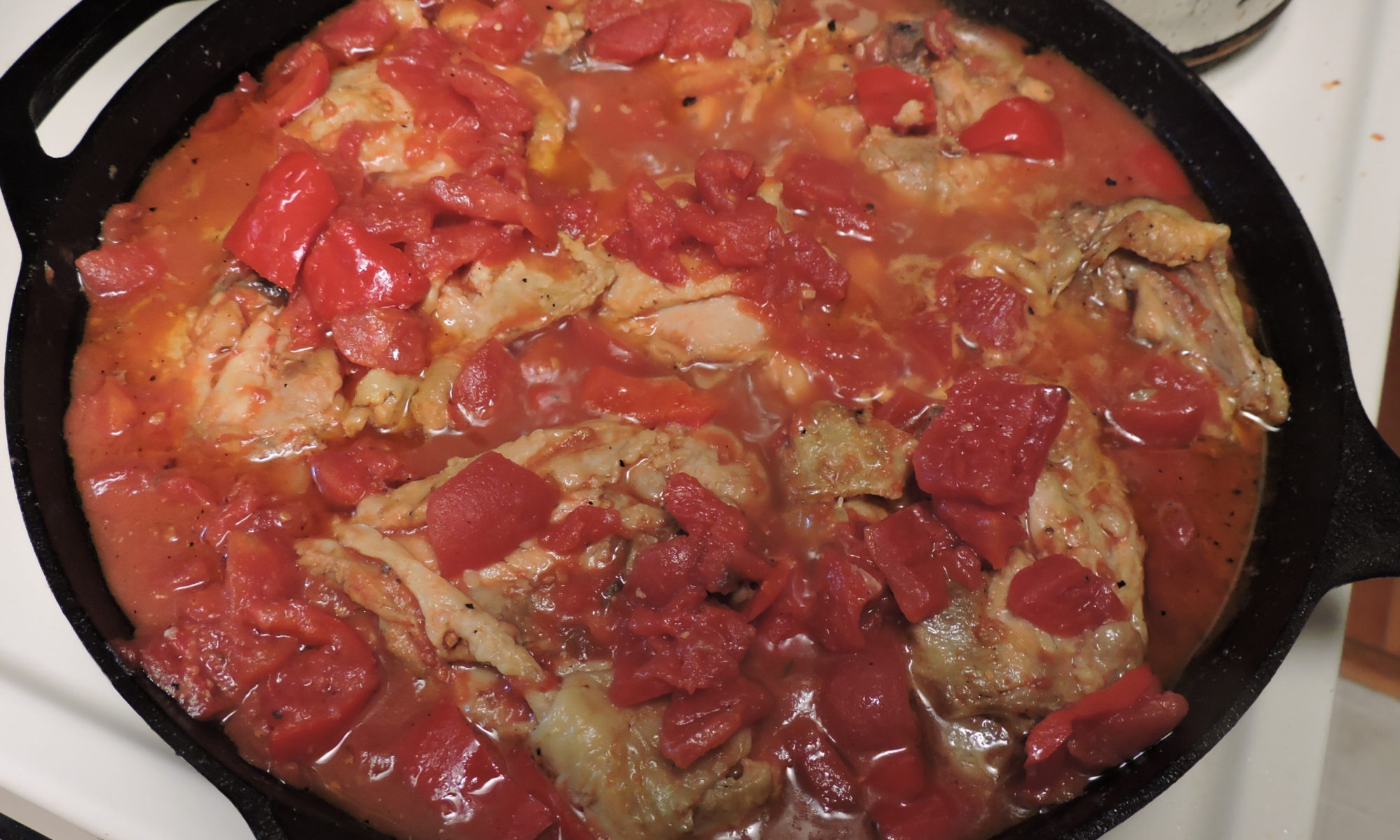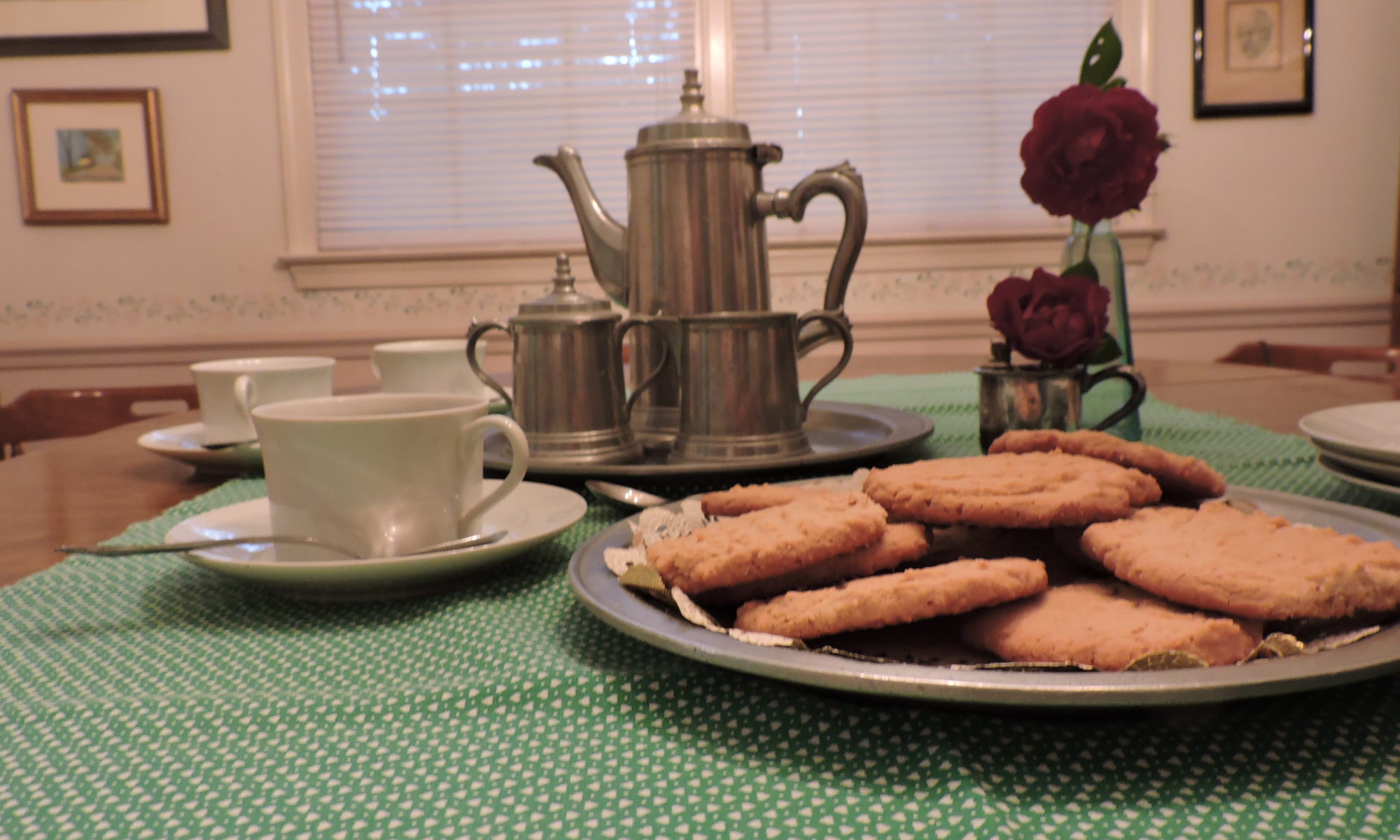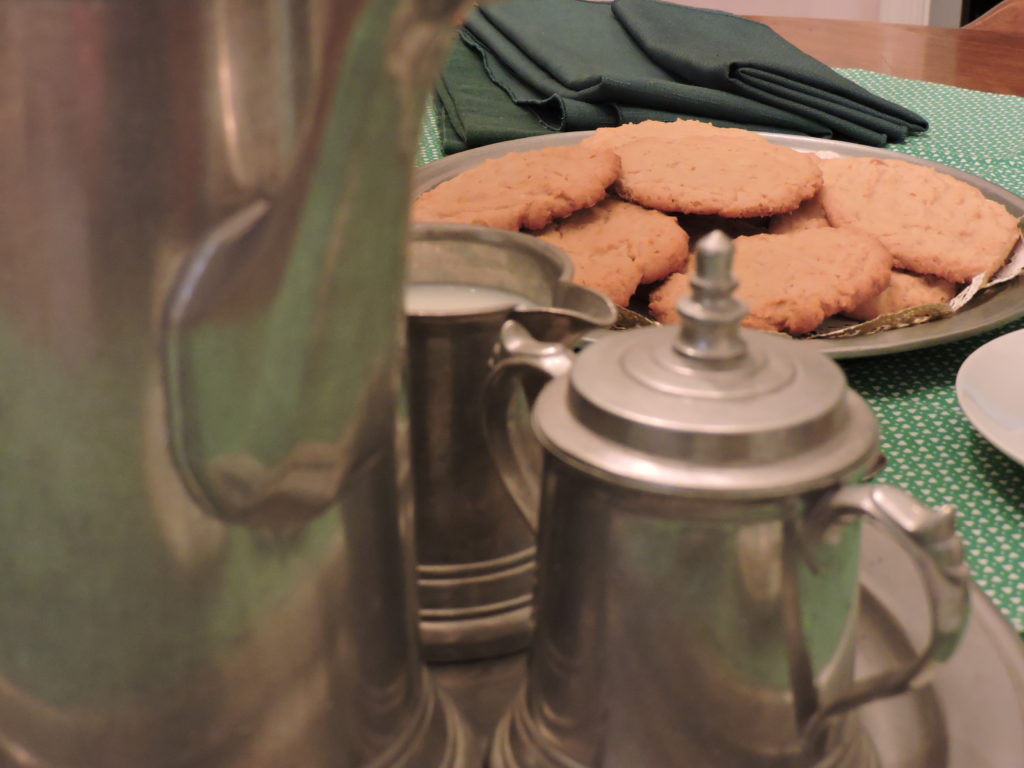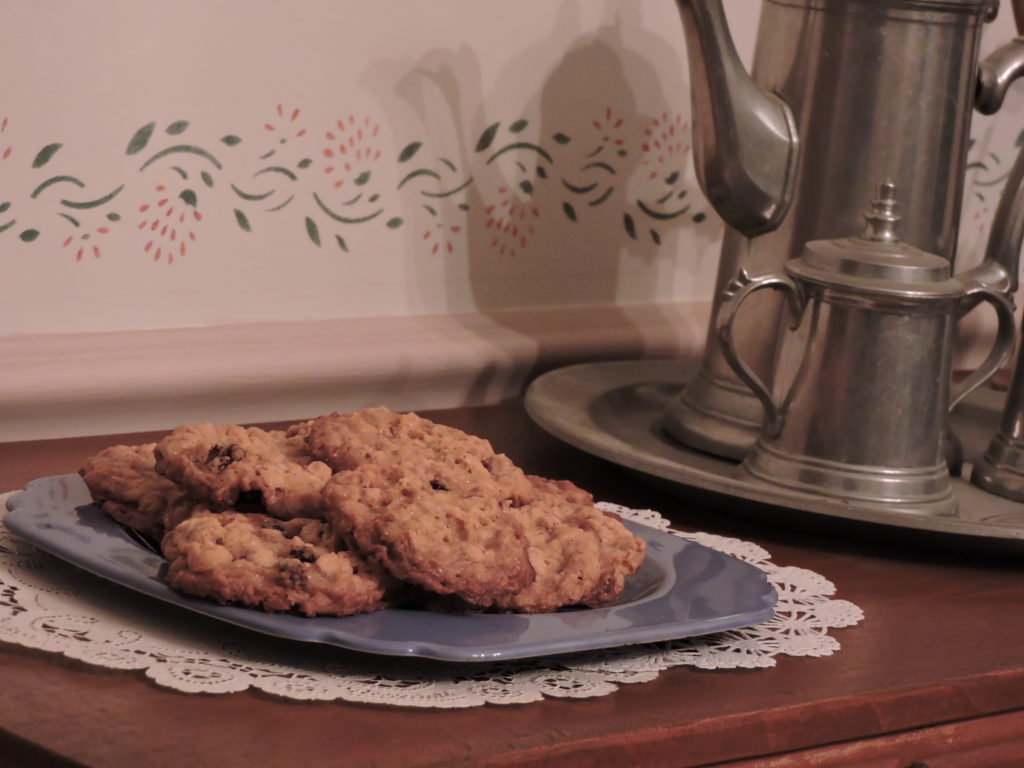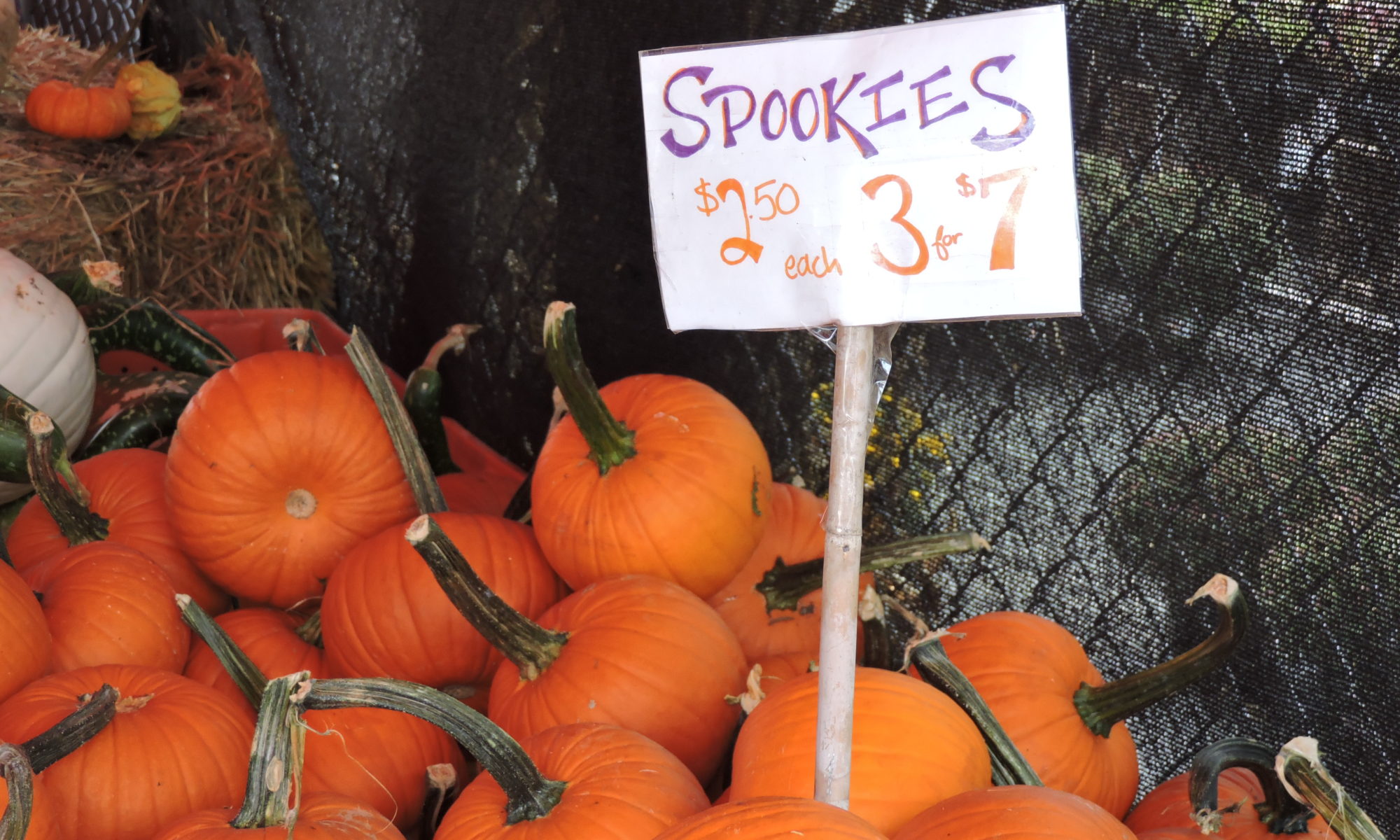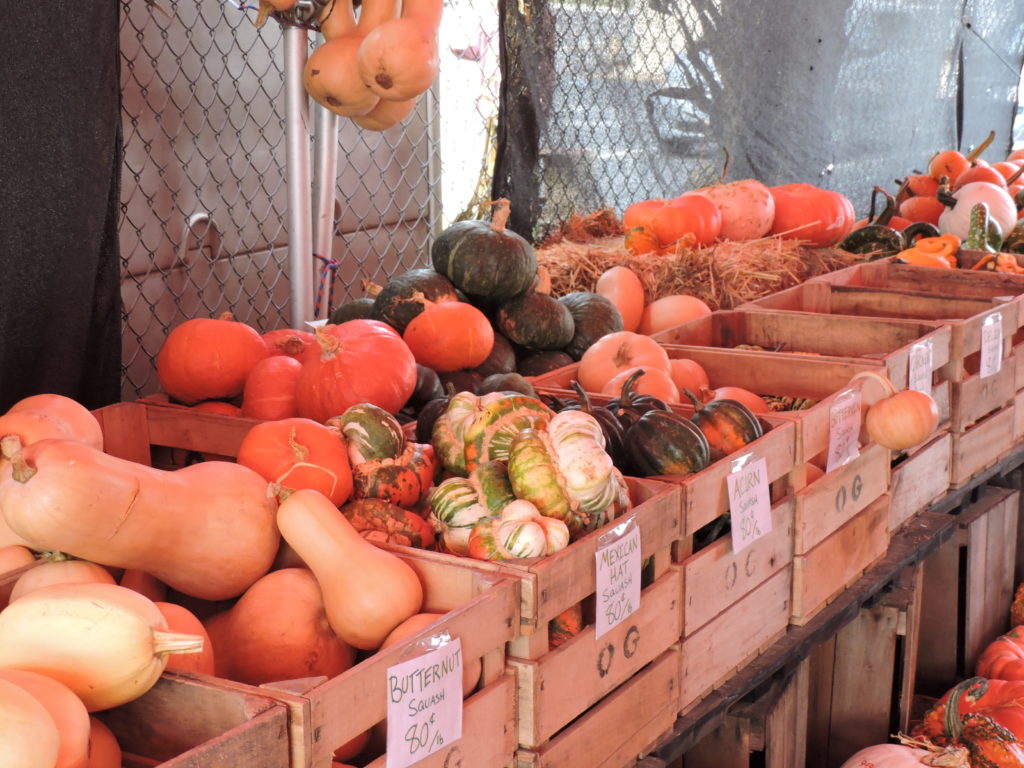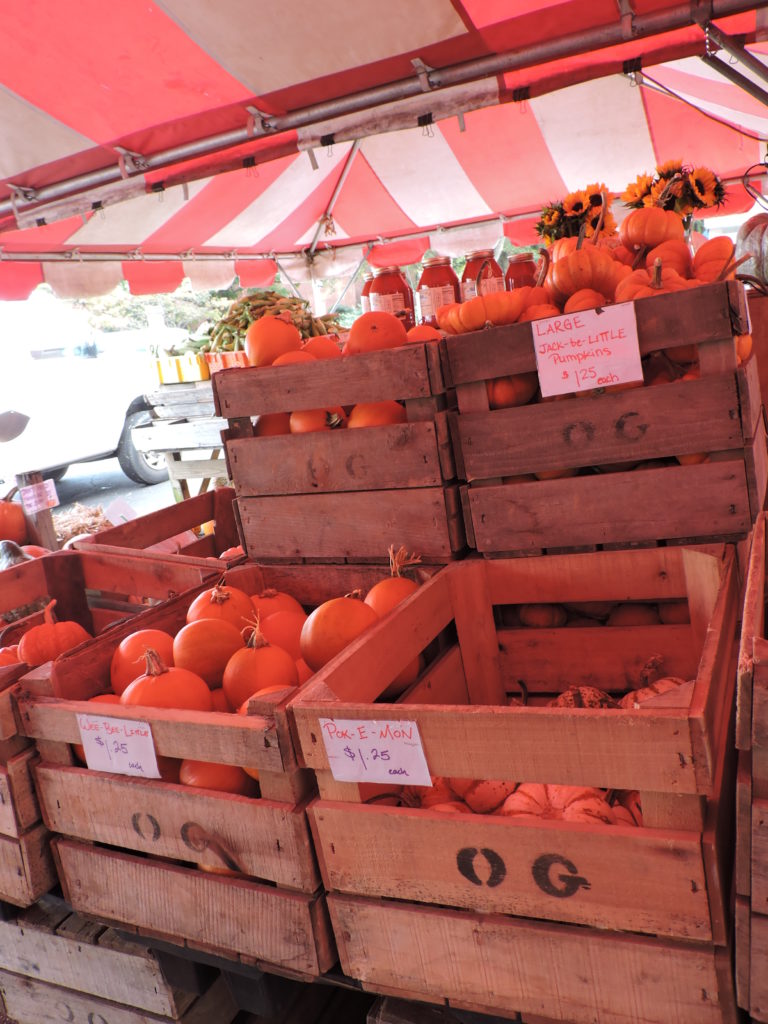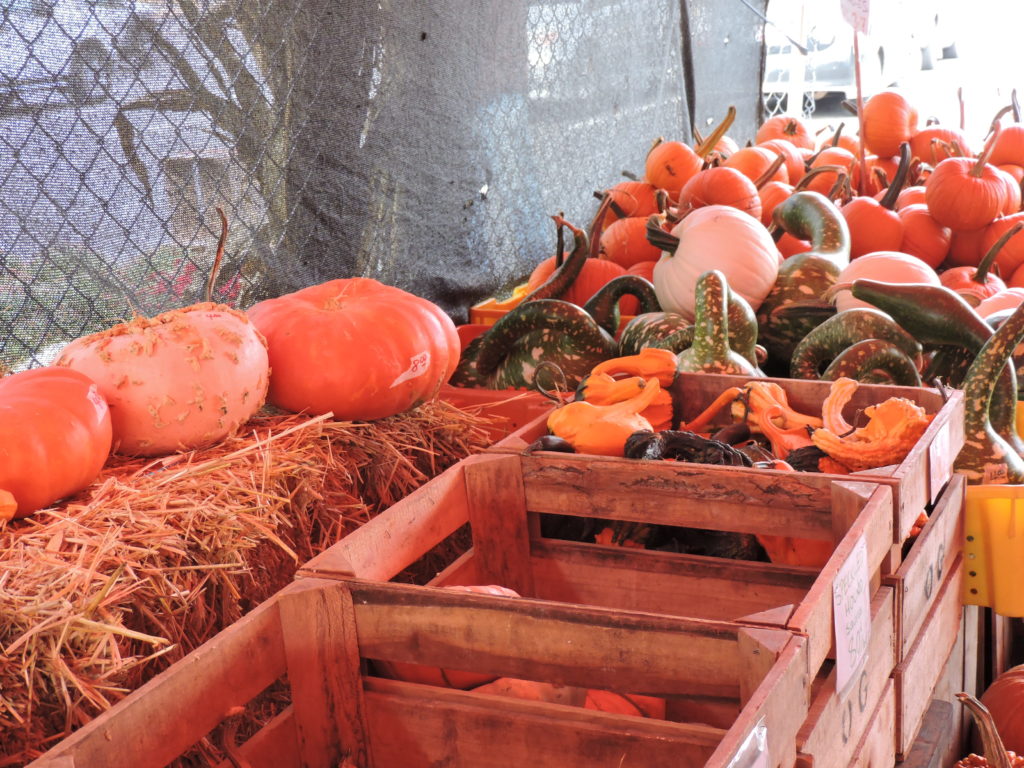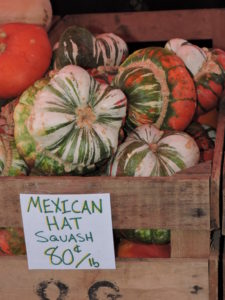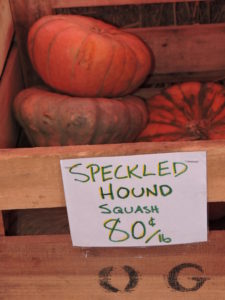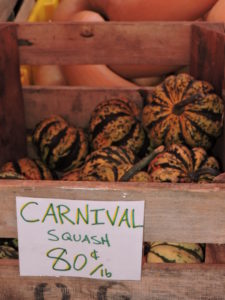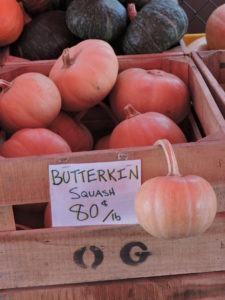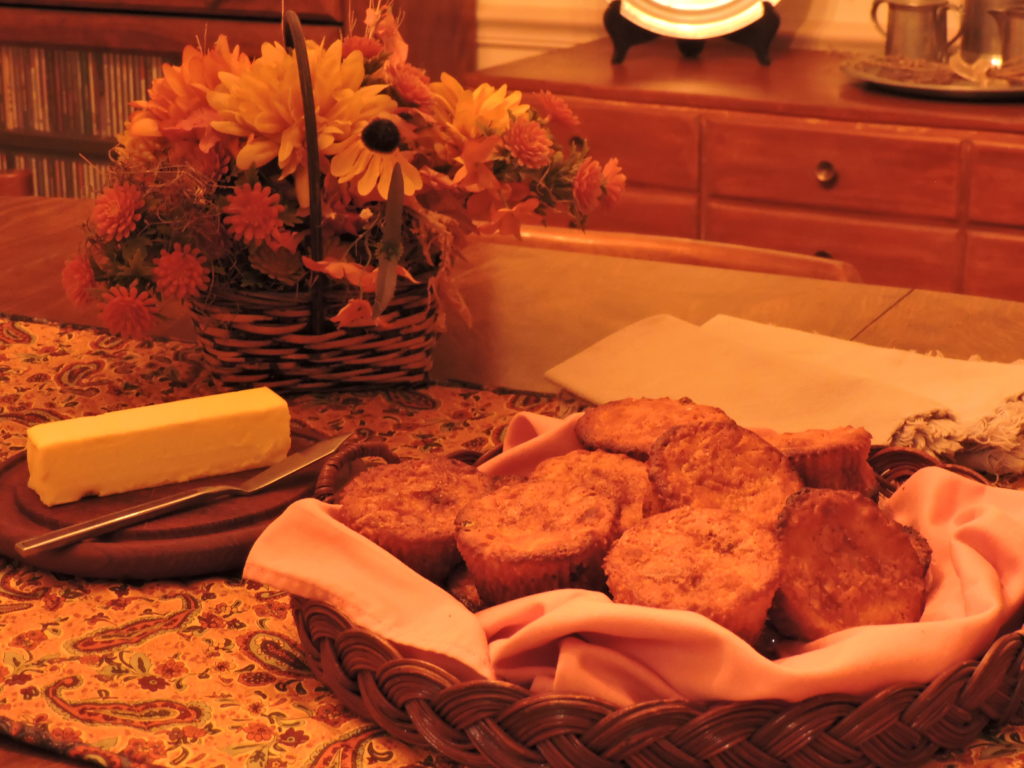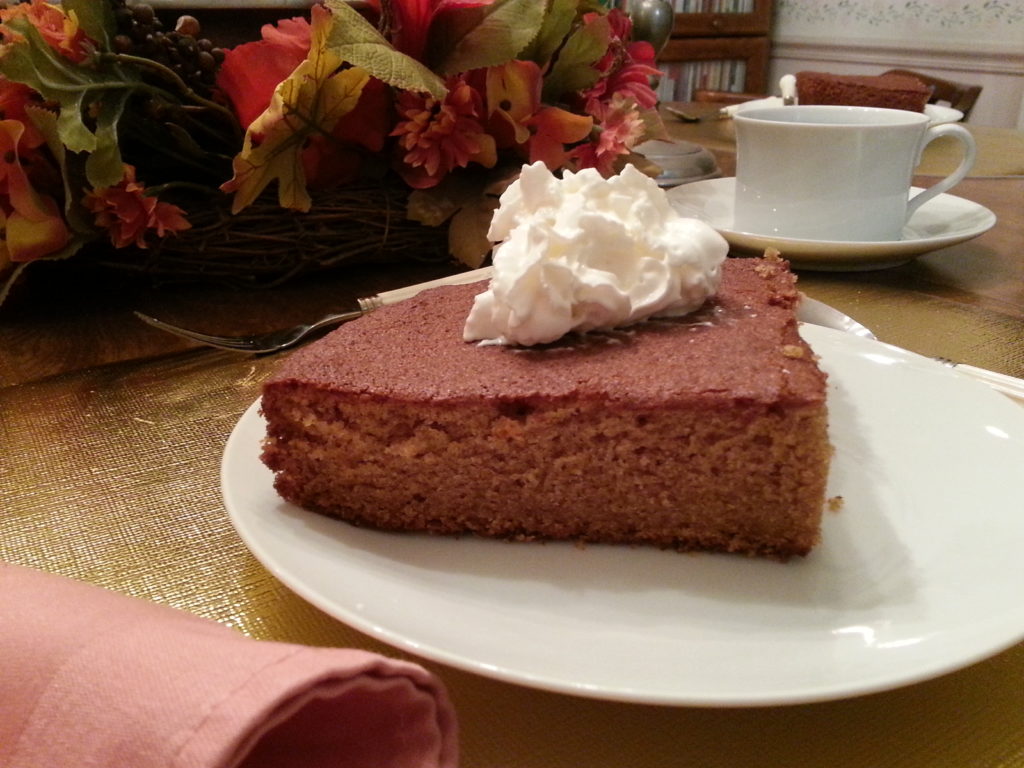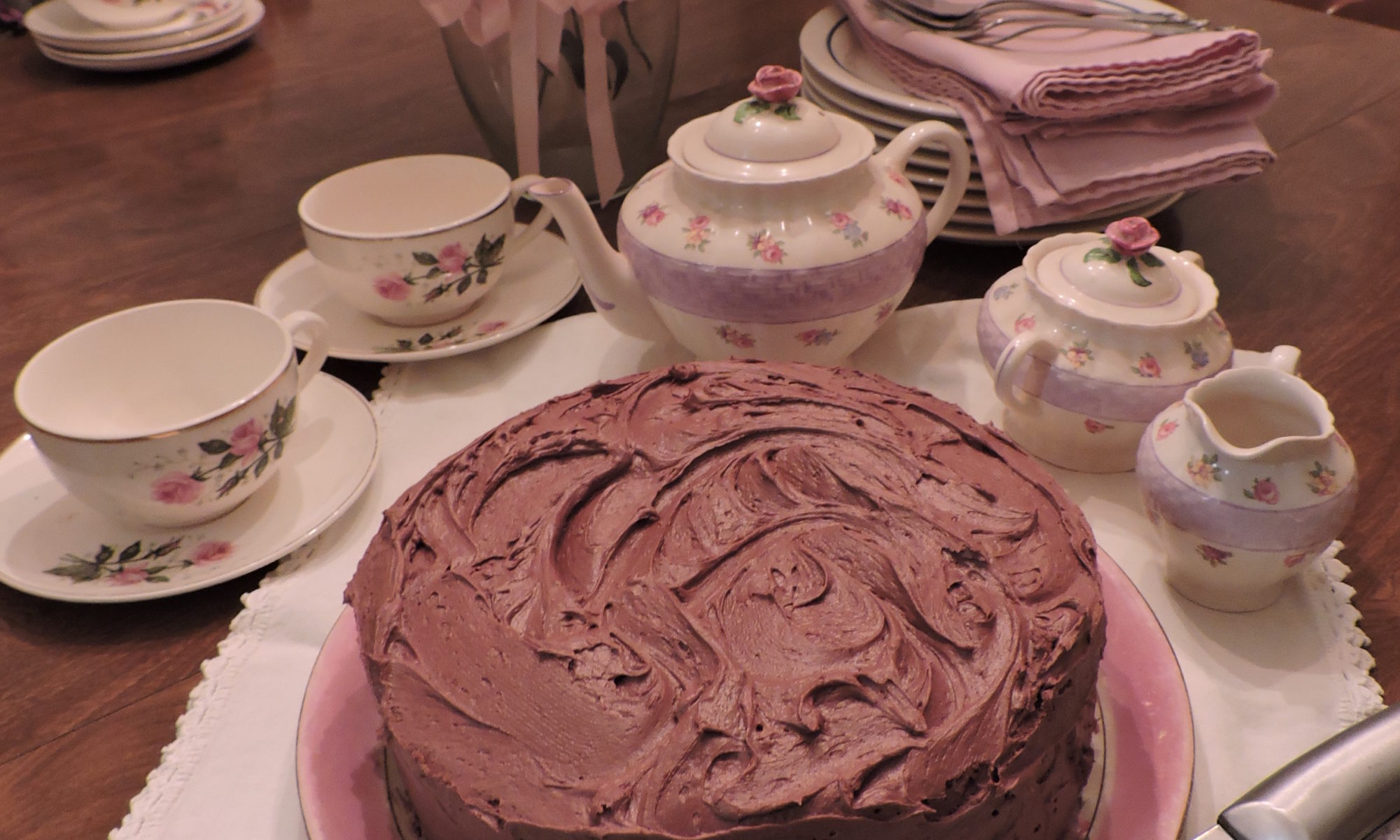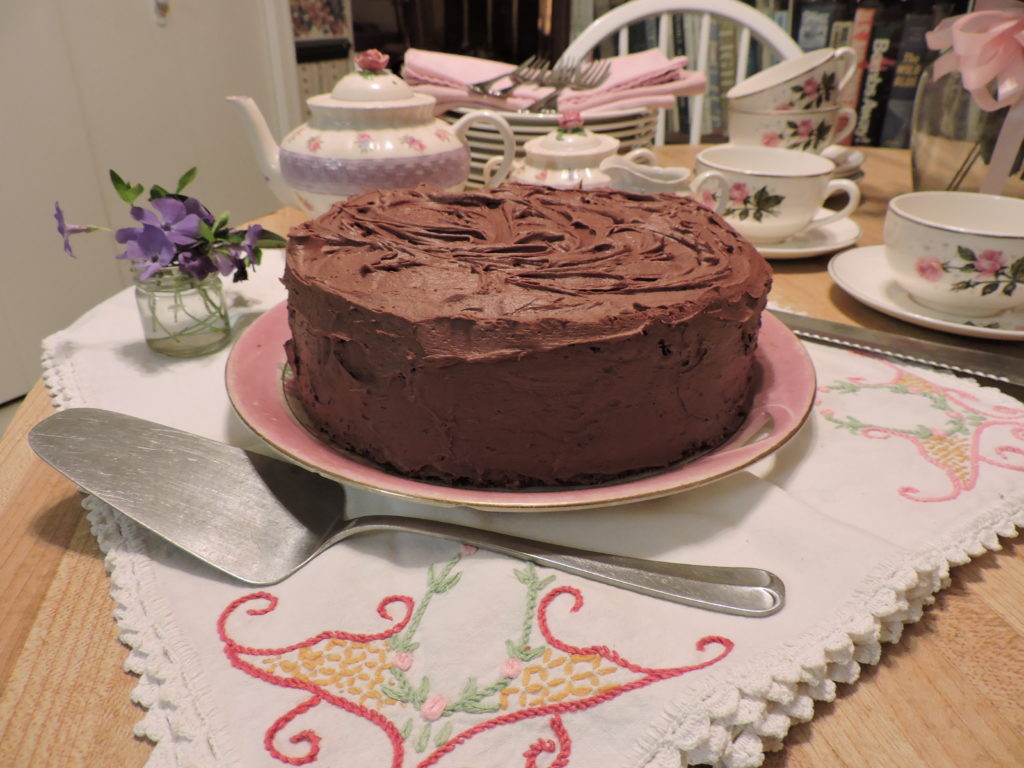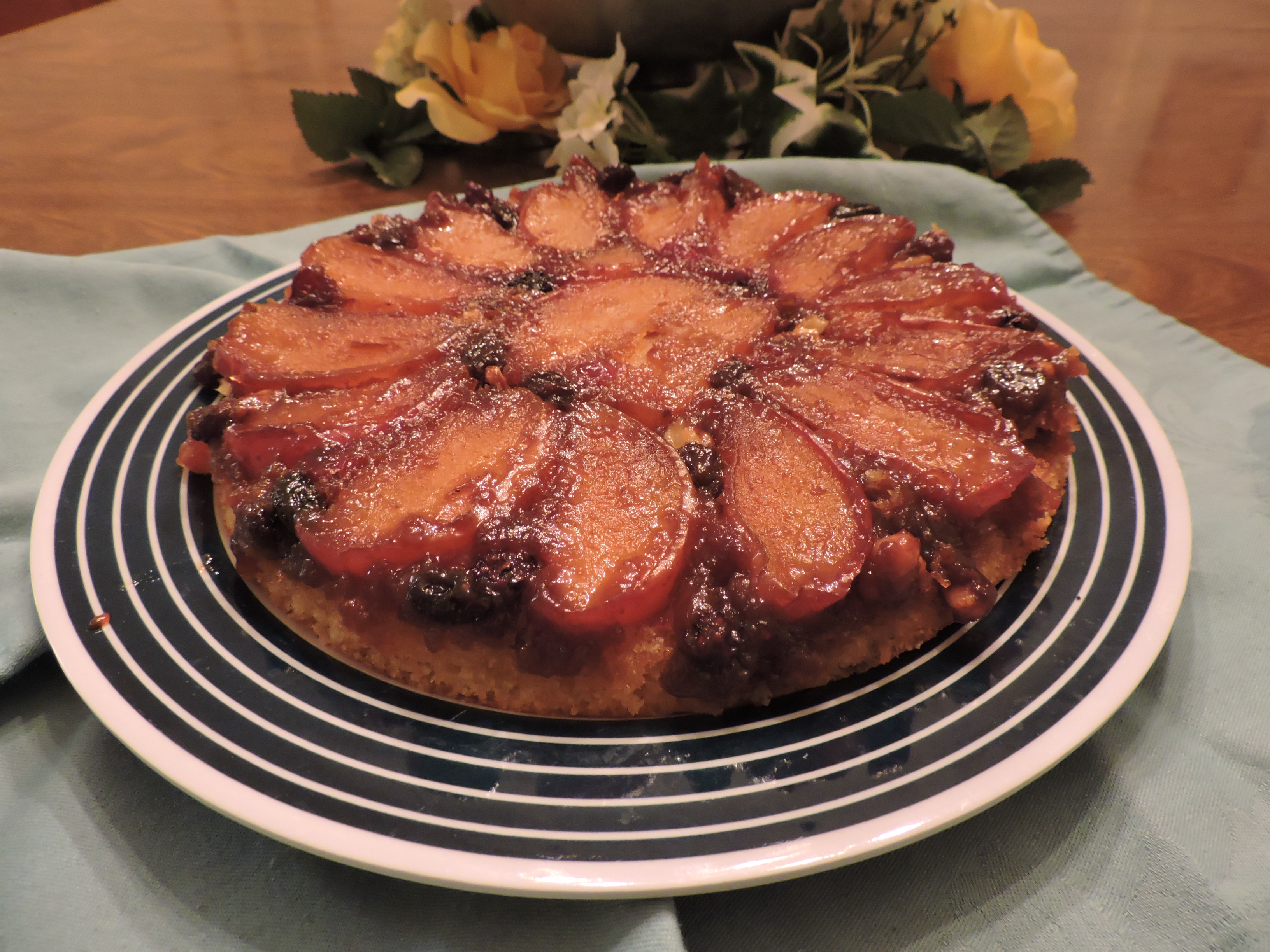An invitation to dinner at Sally and Ken Stier’s home is always a delight. You know dinner will be great and you’ll have the fun of watching Sally – the most naturally gifted cook I know – prepare it.
Stepping through the door on our latest visit, we were greeted by the aroma of Chicken Cacciatore simmering away on the stove. Handed a glass of wine, other guests joined artist Ken in the studio where his watercolors are displayed.
But I hung out in the kitchen where Sally moved effortlessly from sink to counter to stove – washing and trimming green beans, cutting up vegetables for a salad, giving the chicken an occasional stir – and chatting all the while.
Served in the dining room with salad and the aforementioned green beans, the Cacciatore was superb. The recipe for it originated with Sally’s Italian mother Millie Ruggieri Pannell who made it often.
“Our family didn’t have a lot of money so my mother was thrifty. This recipe using chicken thighs was easy on the budget,” she said.
Sally shares it here.
Millie Ruggieri Pannell’s Chicken Cacciatore
1 Tablespoon olive oil
8 Chicken thighs
(Sally used skinless, deboned thighs her supermarket had on sale but says using bone-in thighs with skin on works well too)
1 whole red pepper diced
1 16-ounce can diced tomatoes (any good brand)
1 8-ounce can diced tomatoes (any good brand)
Handful of mushroom slices (optional)
(You’ll need a large saucepan or skillet.)
Heat oil over high heat and brown the 8 thighs on both sides. Remove thighs from pan to a plate.
Saute diced pepper in remaining fat (if excessive pour a bit off)
Return thighs to pan.
Pour both cans of diced tomatoes into pan over chicken and toss in mushrooms if using.
Turn down heat and allow to simmer for two to three hours
Serve over spaghetti or linguine
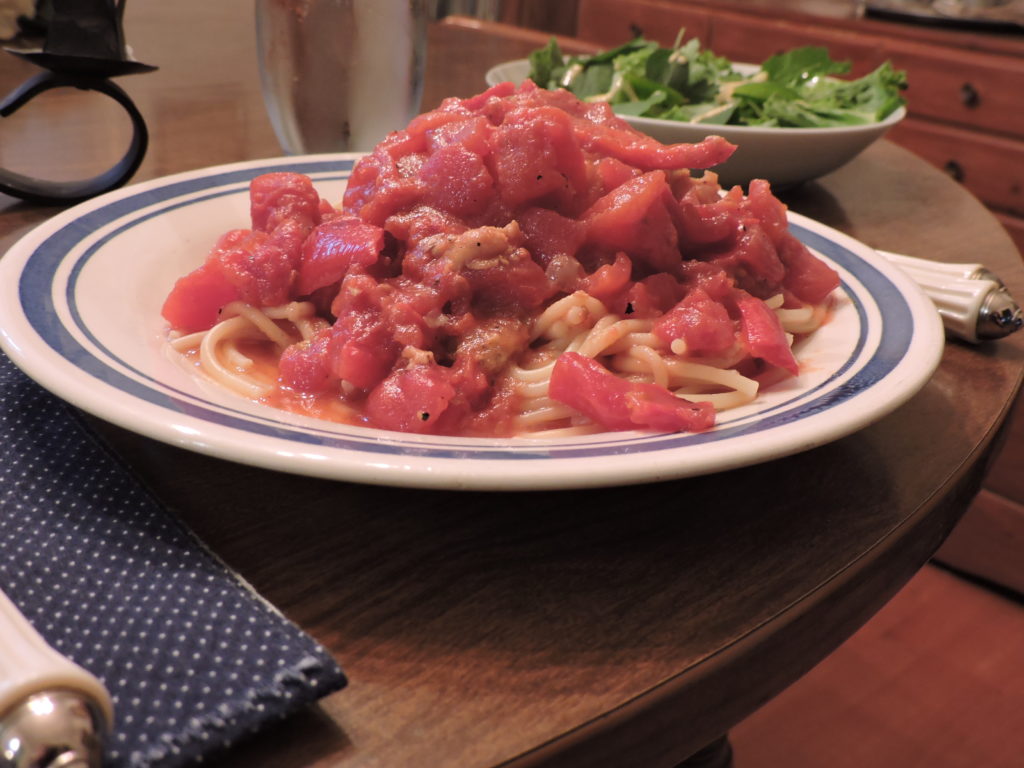
Note: The diced red pepper and long simmering time develop an amazing depth of flavor…without adding any salt. Sally’s family grows mushrooms so she’ll sometimes add a handful but they’re optional.
Since both the tomatoes and red pepper in this hearty recipe are packed with vitamins and a good source of dietary fiber, I find a green salad the perfect complement.
For a light dessert, I like to trot out a recipe for lemon sugar cookies that I discovered over a decade ago in a book called “Lighthearted Everyday Cooking” by Anne Lindsay published in conjunction with The Heart and Stroke Foundation of Canada in 1991. It’s still available.
I got my copy in 1994 at a time when the American Medical Association was recommending that polyunsaturated margarine be used in place of butter. Thus, margarine is the fat listed in the recipe. I recommend using a “trans-fat free” margarine like Land O’Lakes .
I’ve made only one ingredient switch to the original recipe substituting finely ground millet for some of the flour as it adds a light but interesting texture.
Lemon Sugar Cookies
1/4 cup soft trans-fat free margarine
2/3 cup granulated sugar
1 egg
2 Tablespoons lemon juice
1-1/4 cups all purpose or unbleached flour
2-1/2 Tablespoons plus 1 teaspoon more unbleached flour mixed with 2-1/2 Tablespoons of finely ground *millet (or 1/3 cup wheat flour)
Grated rind of 2 lemons
1/2 teaspoon baking soda
1 Tablespoon granulated sugar for sprinkling
Mix together soft margarine and sugar and add egg. Mix well.

Then squeeze and add two Tablespoons lemon juice. Beat until light and fluffy.
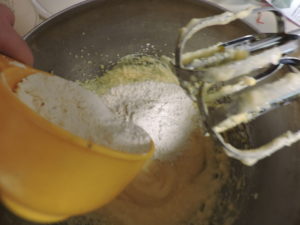
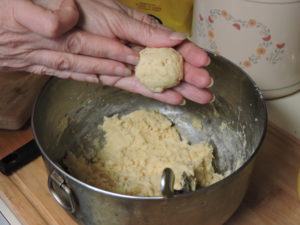
Add flour, millet/flour mixture (or whole wheat flour), grated lemon rind and baking soda.
Shape tablespoonfulls (I use two soup spoons) of dough into balls.
Place on greased cookie sheets. (I coat my timeworn favorite cookie sheets with canola oil.) Use the tines of a fork to press the balls of dough flat. Sprinkle a little granulated sugar on top.
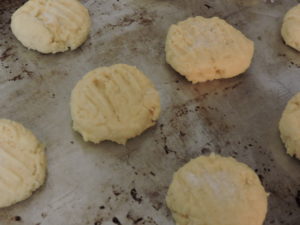
Bake in 350 degree oven for 10 minutes or till firm. Makes 40 cookies that smell heavenly while baking and taste even better.
